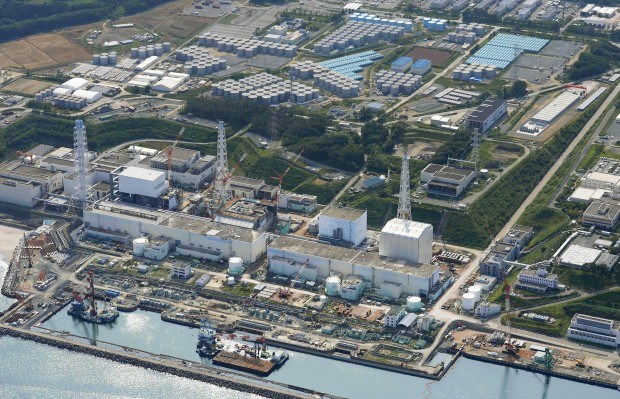Japan’s health ministry confirmed for the first time that leukemia found in a worker at Tokyo Electric Power Co.’s Fukushima Dai-Ichi power plant is a result of the March 2011 atomic disaster.
The worker was in his 30s while employed at the Fukushima facility north of Tokyo between October 2012 and December 2013, according to a statement from the Ministry of Health, Labour and Welfare.
The finding comes as Tokyo Electric has sought to underscore progress in cleaning up and containing the worst nuclear disaster in decades and as the company, also known as Tepco, eyes a return to the bond market.
Tokyo Electric’s shares fell 4.5 percent to 832 yen on the Tokyo stock exchange—the biggest one-day drop since Sept. 1.
“First signs of big trouble ahead for Tepco as radiation exposure looks to be taking its toll on workers’ health,” Amir Anvarzadeh, Singapore-based global head of Japan equity sales at BGC Capital Partners Inc. said in an email. “Tepco could be facing huge lawsuits if and when radiation leaks are linked to health issues.”
Absorption of Radiation
The worker received 15.7 millisieverts (mSv) of radiation during his time at the Fukushima facility, while workers compensation insurance is awarded after receiving 5 mSv in a year, according to the ministry. So far, 13 workers at nuclear power facilities have received compensation for cancer due to radiation exposure. There is still debate, however, as to whether low doses of radiation—below a threshold of 100 mSv—have a direct link to leukemia.
The millisievert is a measure of the absorption of radiation by the human body.
High-dose radiation exposure increases the risk of developing acute myeloid leukemia, according to the American Cancer Society. Japanese atomic bomb survivors had a greatly increased risk of developing acute leukemia, most often about six to eight years after exposure, the society says on its website.
A study published earlier this month by Toshihide Tsuda, a professor at Okayama University, found that cases of thyroid cancer have increased among children and adolescents in Fukushima Prefecture since the accident.
Worker Safety Pledge
About 7,000 contract workers and Tepco employees are at Fukushima on any given weekday, according to Tepco, which is also Japan’s largest utility. About half the workers are from the Fukushima region.
Tepco will continue to manage workers’ exposure, spokesman Tatsuhiro Yamagishi said by email following the health ministry’s statement.
Worker safety is of utmost importance, and the company aims to lower radiation exposure and increase worker comfort, Akira Ono, chief of the Fukushima Dai-Ichi plant, told reporters earlier this month during a tour of the facility. Tepco opened a rest house at the end of March that offers workers an indoor location to relax and enjoy a warm meal for the first time.
The utility is currently removing rubble from the three reactors that melted down at Fukushima after a record earthquake and tsunami wrecked the plant in March 2011.
The company has spent roughly 430.6 billion yen ($3.6 billion) on decommissioning the facility as of June 30, according to Tepco’s Yamagishi.





















 How Insurers Can Avoid Post-Merger Technology Failure
How Insurers Can Avoid Post-Merger Technology Failure  NOAA Announces Latest AI-Driven Global Weather Models
NOAA Announces Latest AI-Driven Global Weather Models  Nearly Half of 100 Largest P/C Insurers Destroy Value: ACORD
Nearly Half of 100 Largest P/C Insurers Destroy Value: ACORD  Federal Aviation Notice Warned of Slackline Before Deadly Arizona Helicopter Crash
Federal Aviation Notice Warned of Slackline Before Deadly Arizona Helicopter Crash 

